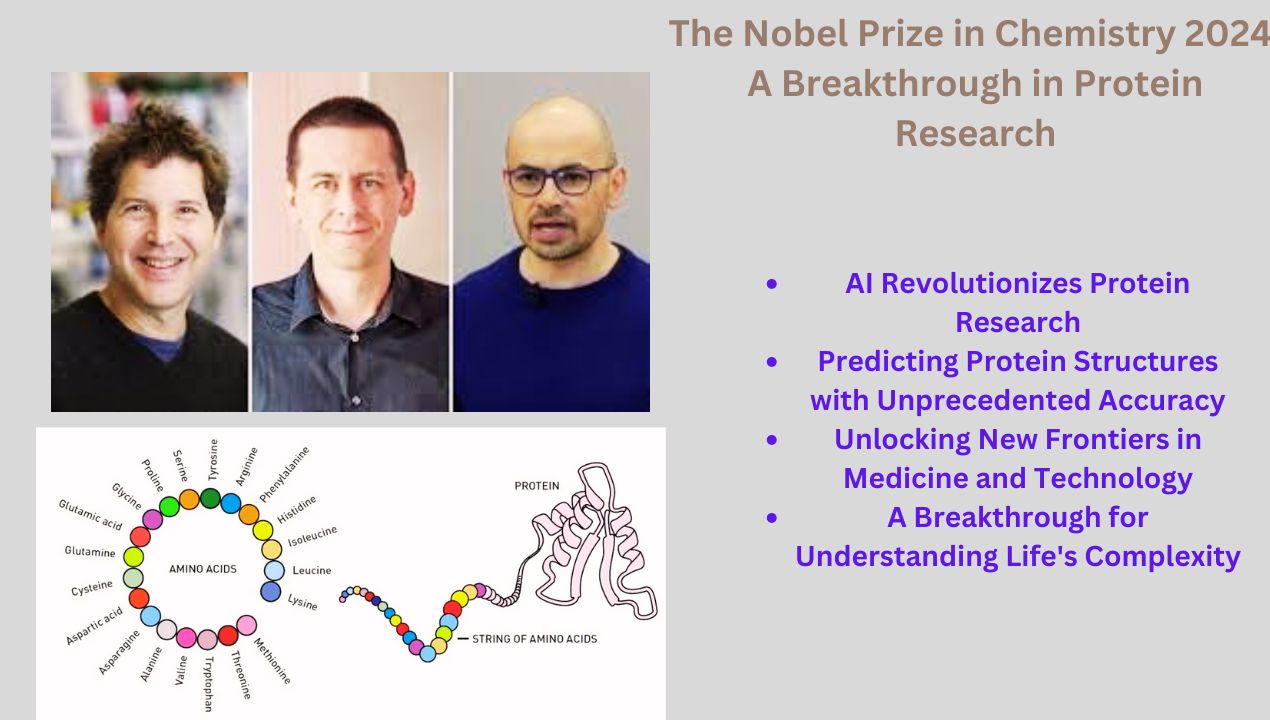John Hopfield and Geoffrey Hinton have been awarded the 2024 Nobel Prize in Physics
The 2024 Nobel Prize in Physics has been bestowed upon John J. Hopfield and Geoffrey E. Hinton in recognition of their pioneering contributions to the realm of artificial intelligence (AI). The Royal Swedish Academy of Sciences announced the winners on October 8, 2024, recognizing their work that has fundamentally transformed machine learning and has been instrumental in the AI revolution. Both laureates will share a prize sum of 11 million Swedish kronor (approximately $1.1 million) and will receive their awards at a ceremony in Stockholm on December 10, 2024.
The Contributions of the Winners
John Hopfield: The Inventor of Associative Memory Networks
John Hopfield, a 91-year-old physicist and professor emeritus at Princeton University, is celebrated for his invention of the Hopfield network, which is a form of associative memory that enables the storage and reconstruction of patterns. His work, published in 1982, laid the groundwork for understanding how complex systems can remember and retrieve information. The Hopfield network can take in a distorted or incomplete pattern and accurately recreate the original, functioning much like human memory.
Hopfield’s approach utilizes fundamental principles of physics to analyze how systems with many interacting components can exhibit emergent properties. He noted that “when systems possess sufficient complexity and size, they can exhibit properties that cannot be intuitively understood from the fundamental particles involved.” This highlights the significant implications of his work for both physics and other fields.
Geoffrey Hinton: The Godfather of AI
Geoffrey Hinton, aged 76, is often referred to as the “godfather of AI.” He is a professor emeritus at the University of Toronto and has made significant advancements in the development of artificial neural networks. His work has allowed machines to autonomously discover features in data, a critical component in modern AI applications, including image recognition and natural language processing.
Hinton’s innovative use of Boltzmann machines, which are a type of stochastic neural network, paved the way for deep learning technologies that are prevalent today. These networks enable machines to learn from examples, improving their ability to analyze vast amounts of data and identify patterns without explicit programming.
In recent statements, Hinton acknowledged the dual-edged nature of AI, stating, “We have no experience of what it’s like to have things smarter than us.” He expressed both optimism for the potential benefits of AI, particularly in fields like healthcare, and caution regarding its possible risks.
Historical Context of the Nobel Prize in Physics
The Nobel Prize in Physics is among the most esteemed honors in the scientific community. The first recipient, Wilhelm Conrad Röntgen, was awarded in 1901 for his discovery of X-rays. Over the years, the prize has recognized numerous groundbreaking contributions, including those of Albert Einstein, Niels Bohr, and John Bardeen, the only person to have won it twice.
Previous Indian Laureates
India has a rich history of Nobel Prize winners in Physics. The first Indian to receive the award was C.V. Raman in 1930, known for his work on light scattering. Another notable recipient, Subrahmanyan Chandrasekhar, was awarded the prize in 1983 for his theoretical studies of the physical processes important to the structure and evolution of the stars.
The Importance of Machine Learning and AI
Understanding Machine Learning
Machine learning is a subfield of computer science that focuses on creating algorithms that allow computers to learn from and make predictions based on data. Unlike traditional programming, which relies on explicit instructions, machine learning algorithms identify patterns in data and improve their accuracy over time through experience. This ability is crucial for applications ranging from healthcare diagnostics to financial forecasting.
The Role of Neural Networks
Neural networks, modeled after the human brain, form the foundation of contemporary AI. They consist of interconnected nodes (neurons) that process information in parallel. The architecture of these networks enables them to perform complex tasks such as image recognition, speech understanding, and even generating human-like text.
Geoffrey Hinton’s work on neural networks has been pivotal in the advancement of these technologies. By introducing concepts from statistical physics into AI, he was able to enhance the efficiency and performance of neural networks, significantly influencing the development of deep learning.
The Future of AI
Both Hopfield and Hinton have raised concerns regarding the future implications of their work. Hinton remarked on the potential dangers of AI systems becoming more intelligent than humans, which could lead to unforeseen consequences. “It’s going to be wonderful in many respects, but we also have to worry about a number of possible bad consequences,” he stated.
Ethical Considerations
The rapid development of AI technologies has sparked a global conversation about ethics in AI. As machine learning continues to evolve, it is imperative to address issues such as data privacy, algorithmic bias, and the potential for job displacement. Ellen Moons, chair of the Nobel Committee for Physics, emphasized the responsibility of humanity in using this new technology ethically and safely.
Machine Learning Applications in Various Fields
Advances in Healthcare
AI’s potential in healthcare is particularly promising. Machine learning algorithms can analyze medical images to detect diseases early, predict patient outcomes, and personalize treatment plans. The ability to process and learn from vast datasets allows for breakthroughs in research and clinical practices.
Scientific Research
Machine learning is also revolutionizing scientific research. For example, it has been used to sift through enormous datasets to identify new particles in physics experiments and predict the properties of materials in chemistry. These advancements could lead to innovations in fields such as renewable energy, materials science, and molecular biology.
FAQs:
1. Who were awarded the 2024 Nobel Prize in Physics?
Answer: The 2024 Nobel Prize in Physics was awarded to John Hopfield and Geoffrey Hinton for their pioneering work in artificial intelligence and machine learning.
2. What is the significance of the work done by John Hopfield and Geoffrey Hinton?
Answer: Their work laid the foundational principles for artificial neural networks, which are crucial for advancements in machine learning, enabling computers to learn from data and improve their performance over time.
3. How much prize money will the winners share?
Answer: John Hopfield and Geoffrey Hinton will share a prize sum of 11 million Swedish kronor (approximately $1.1 million).
4. What are artificial neural networks, and why are they important?
Answer:Artificial neural networks are computational models inspired by the human brain that enable machines to recognize patterns, learn from data, and make decisions, forming the basis of modern AI technologies.
5. Why is Geoffrey Hinton referred to as the “godfather of AI”?
Answer: Geoffrey Hinton is known as the “godfather of AI” due to his pioneering contributions to neural networks and deep learning, which have significantly advanced the field of artificial intelligence.
6. What is the Hopfield network, and what role did it play in AI development?
Answer:The Hopfield network is a type of recurrent neural network that can store and retrieve patterns. It is crucial for understanding associative memory, which is essential for tasks like image recognition in machine learning.
7. What ethical concerns did Geoffrey Hinton express regarding AI technology?
Answer:Hinton expressed concerns about the potential for AI systems to outsmart humans, emphasizing the need for responsible development and ethical use of AI technologies to prevent unintended consequences.
8. What was the first Nobel Prize in Physics awarded for, and when?
Answer:The first Nobel Prize in Physics was awarded to Wilhelm Conrad Röntgen in 1901 for the discovery of X-rays, which revolutionized diagnostic medicine.
9. Which Indian scientists have previously won the Nobel Prize in Physics?
Answer:The first Indian to win the Nobel Prize in Physics was C.V. Raman in 1930, followed by Subrahmanyan Chandrasekhar in 1983.
10. What is the future outlook for machine learning and AI technologies?
Answer:The future of machine learning and AI looks promising, with potential applications across various fields such as healthcare, transportation, and scientific research, but it also raises important ethical questions about safety and control.
OTHER LINKS:
Unlocking Growth: 3 Brilliant Economists Join RBI’s Monetary Policy Team





